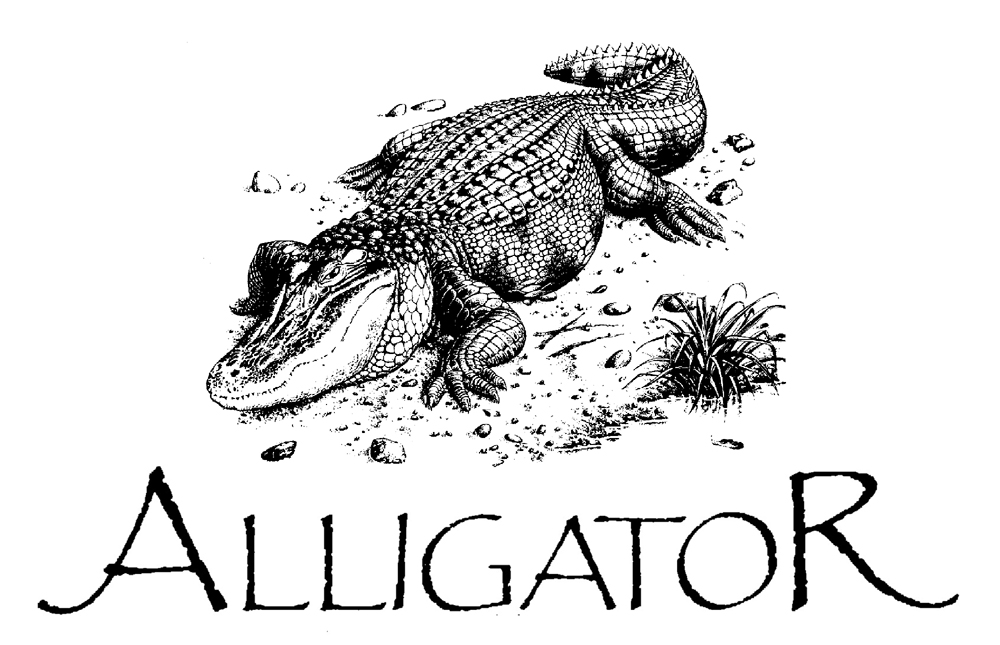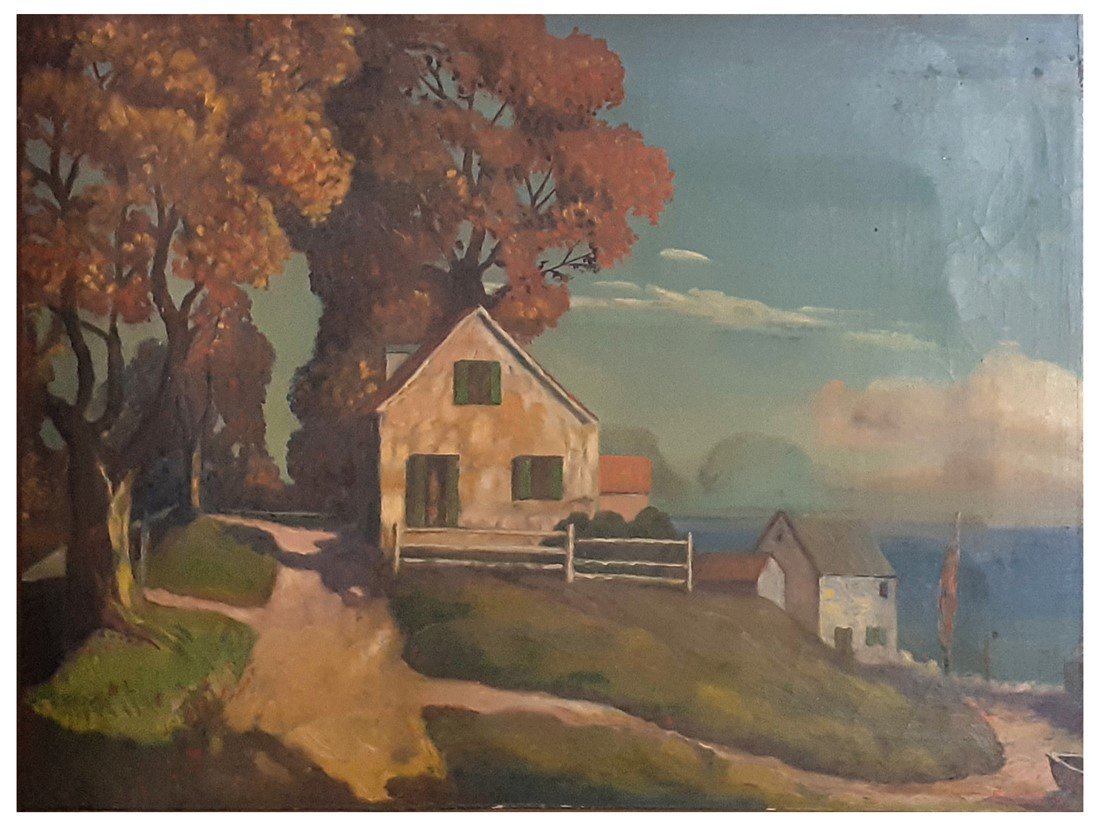To reserve an item email: alligatormilitaria@gmail.com or text: +44 (0)7970 273034
WWII Kriegsgefangenenpost - birthday greetings from a British POW
The German authorities authorized a Prisoner Of War postal service (Kriegsgefangenenpost) during WWII, to both send and receive correspondence, subject to strict rules and censorship. This example dated 16th May 1944 and addressed to Mr. & Mrs. F. Norman, 2316 Paisley Road West, Glasgow SW2 from ‘John’, has been artistically embellished as a birthday card for his parents.
Fold mark and two small tears but reasonably good condition.
H: 9.5 x W: 14.7cm
£16.00 + £1.00 P&P UK
Cottage by a lake - oil on Zeltbahn
Brought over from Brittany some years ago, this charming expressionistic style painting with its rustic stained pine frame remains something of an enigma. At first sight it’s oil on canvas, however one look at the reverse tells another story - not artist's canvas, but instead a section of Zeltbahn (splinter pattern), the versatile shelter-half used by the German army throughout WWII.
Noticeable also is the surplus fabric at one side and the fact that it has been stretched and secured with long timber nails, hammered flat. Signed Stahl in red paint bottom right and dated 4 (clearly visible), and under a magnifying glass minute particles of paint appear to be 6. The use of the Zeltbahn is significant, also the crude but effective method of stretching - so could this be the work of a talented POW with both time and a Zeltbahn on his hands?
The Zeltbahn was versatile. It could be used as a poncho and the triangular shape allowed them to be buttoned together to create various sizes of tent. Image: Occupation de la Normandie Courtesy: PhotosNormandie CC BY-SA 2.0
Stahl is an uncommon German (and Jewish) name meaning steel / armour, hence (Stahlhelm, the German steel combat helmet). Online research led to the acclaimed artist Georg August Stahl (1903-1981) who began his artistic career aged seventeen at the Academy of Fine Arts in Kassel, Germany, his work developing an expressionistic character. Stahl emigrated to the Netherlands in 1930 because of his active political stand against the rapidly growing National Socialist Party and threats he received. He found immediate acceptance in progressive art circles in Rotterdam and later in Amsterdam, but was forced into hiding after the German occupation of the Netherlands in 1940. He was subsequently discovered and drafted into the German army in 1943, but deserted to the Allies during the Invasion of Normandy. As a prisoner of war he was shipped to the UK where he stayed until his repatriation to the Netherlands in 1947. Most interestingly, during this period of 'captivity' he was allowed to travel to the Lake District to study and paint. So, we can be reasonably sure this is the work of a POW, the question is, have we got the right one, or are we barking up the wrong tree all together?
Condition - frame has scuff marks and traces of woodworm, one side separated as shown. Canvas has one or two minor issues including an area on the right side which has some crazing and what appears to be a slight stain. It would no doubt benefit from a gentle clean. Not as taut as a professionally stretched canvas but probably not much worse than when it was originally done.
O/A: H:40 x W:51 x D:4.6cm Canvas: H:35 x W:45cm
£150.00 + £8.60 P&P UK
Statue of Liberty watercolour - German Luftwaffe POW
A delightful representation of this iconic statue, a poignant and unforgetable moment in time for this German Prisoner of War taking the last step of his eventful journey from captivity to eventual freedom. Guenther Fellinger was an air gunner in a Junkers JU 88 night fighter and had been shot down in 1944 after the D-Day landings.
Flugzeug Junkers Ju 88 similar to the plane in which Guenther flew -Bundesarchiv, Bild 101I-363-2258-11 / Rompel / CC-BY-SA 3.0
Captured by the Americans, he was shipped over to the USA where he spent the remainder of the war in POW camps in Bastrop and Livingston (both Louisiana) and Myles Standish (Massachusetts). He was shipped out once more in 1946, this time to the UK where he was held at 51 P/W Camp, Allington, Grantham, Lincolnshire.
Released in 1947, Guenther Fellinger never went home, settling instead in Grantham. He married an English girl in 1950 and passed away in 2019 aged 95 years. During his time as a POW he painted using watercolours and sketched in pencil to occupy his time, a hobby he continued throughout later life, producing a number of larger paintings of wartime aircraft.
This watercolour is on paper and has been trimmed and mounted onto another sheet of paper by the artist, with a hand-written caption on the front together with a brief synopsis of events on the reverse - all of which is in German. The handwriting is in pencil, and although legible is quite faint.
Roughly translated the text reads as follows::
Front: Statue of Liberty in memory of the 19/20 April 1946 on board the St. Albans in N.Y. Harbour.
Wording on the reverse:
19 April 1946 - Arrived in New York travelled on the Hudson River to the New York Harbour. Anchoring by Liberty statue. Sunny weather. View of New York Empire State Building, Manhattan etc.
20.4.1946 - On board St. Albans Victory ship.
21.4.1946 - Travelled through New York harbour in the Atlantic. New York disappeared in light panorama of the skyscrapers. Statue of Liberty salutes in the distance, an indescribable view. My birthday on the rough seas.
NB. This painting has been purchased direct from the family by a colleague. He was given a photocopy of the portrait of Guenther in his Luftwaffe uniform alongside the full length postcard image of him as a POW in the camp at Allington. The addresses of the camp and also his family's home in Germany are written on the reverse of this photocopy which is included in the sale
The picture frame is a vintage Italian Natalini in a marquetry style and is not associated. It was utilised by my colleague to display the picture.
Frame: H:20.3 x W:25.3cm. Image and mount: H:12.2 x 18cm
£110.00 + £4.25 P&P UK











